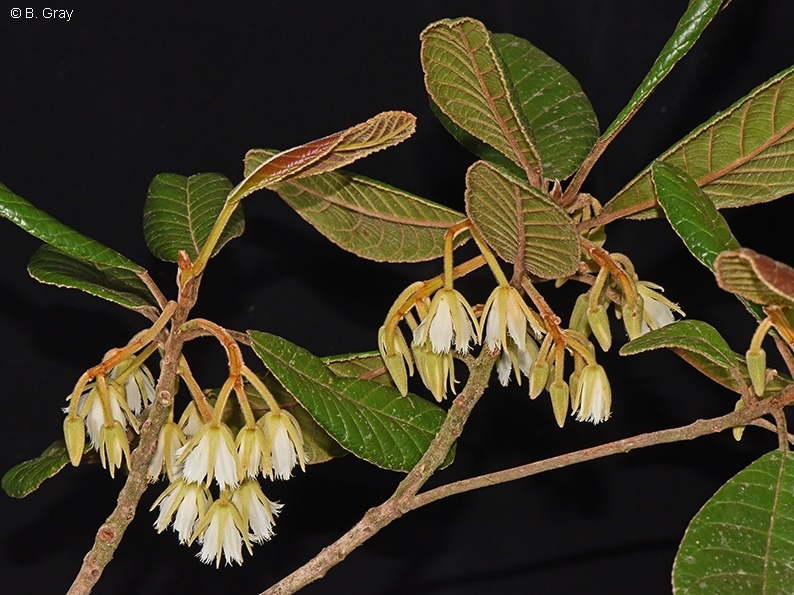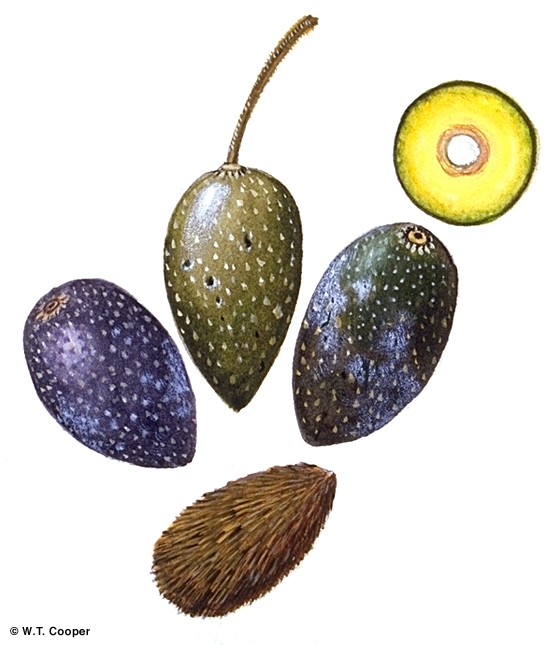Australian Tropical Rainforest Plants - Online edition
Elaeocarpus johnsonii F.Muell.





Mueller, F.J.H. von (1893) Journal of Botany, British and Foreign 31: 322. Type: N Queensland (without precise location), .. Johnson (holotype BRI).
Quandong, Kuranda; Quandong, Johnson's; Johnson's Quandong; Kuranda Quandong
Often a poorly formed and multistemmed tree or with a number of stems from an old stump site.
Young shoots, leaf bearing twigs and petioles densely clothed in brown hairs. Leaf blades about 10-16 x 5.5-8 cm. Midrib hairy on the upper surface; leaf blades have teeth which are difficult to distinguish because of the numerous hairs.
Fruits ovoid-ellipsoid to almost cylindrical, about 27-40 x 14-20 mm. Pericarp marked by conspicuous geniculate fibres when viewed in longitudinal section. Endocarp not discrete, surface +/- smooth (not rugose).
Features not available.
Fallen fruit eaten by Cassowaries and seeds eaten by native rats. Cooper & Cooper (1994).





